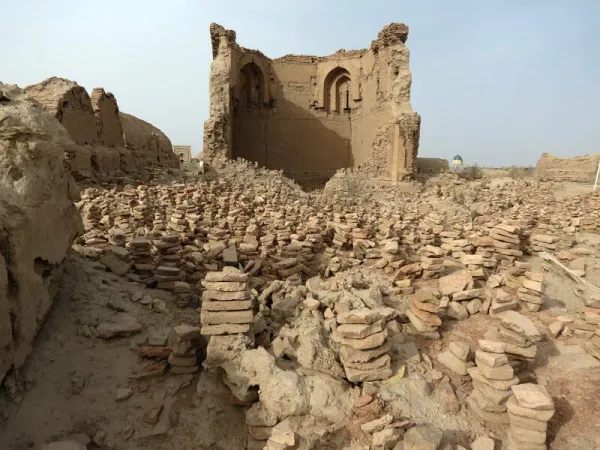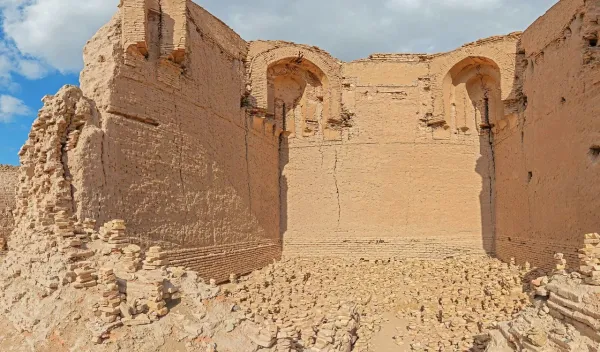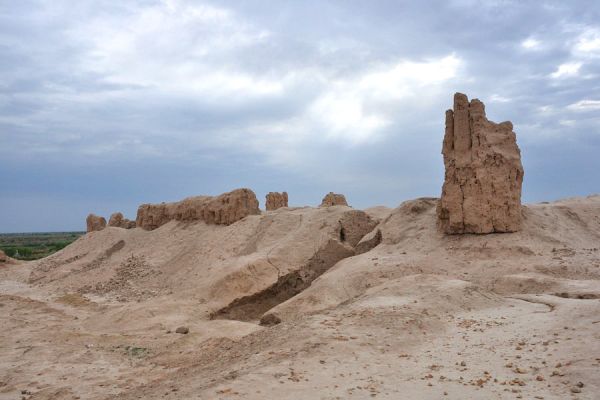Yerezhep Khalifa Mausoleum
The ruins of the Khalifa Yerezhep mausoleum are located on a natural hill 104.6 meters above sea level on the necropolis of Mizdakhan, located 146 meters southwest of the mausoleum of Mazlumkhan Sulu, 4.7 kilometers west and slightly south of the city of Khojeyli, 1.1 kilometers northeast of the settlement of Giaur Kala (Khojeli) in Khojeli the region of the Republic of Karakalpakstan.
The ruins of the Khalifa-Yerezhep mausoleum, dated by archaeologist A.Y. Yakubovsky to the 12th - 14th centuries, were once a square building measuring 11x11 meters. To date, only three of its walls have been preserved, as well as minor remnants of the dome and the masonry of burnt polished bricks on the front side.
There are transitional structures on the walls in the form of perspective arched tromps with strongly elongated heels. According to scientists, the monument was of Sufi origin: this is evidenced by its layout, as well as its name.
According to legend, a saint who preached Islam at the dawn of its spread in these places is buried here. However, many believe that Adam's grave is located here. However, scientists believe that this burial site is identified with the tomb of Gayomard, the first man on Earth from Zoroastrian mythology.
But this is not the only reason why Yerezhep's mausoleum has become a place of pilgrimage for people from all over the world. Archaeological studies have shown that the building, erected in the 9th - 10th centuries, has a solid foundation based on a reed layer that protects the structure from groundwater and gives it earthquake resistance.
Only a part of the masonry remains of the facade where the portal was located, and a pile of burnt polished bricks lies at the entrance. There is an ancient legend dating back to pre-Islamic times that there is a "world clock" here that measures the time of humanity's existence.
Every year, one brick falls from the walls of this building, and when the last one falls, the end of the world will come, and life on Earth will run out. The pilgrims, asking fate for the fulfillment of their cherished desires, built thousands of small pyramids around the tomb from fallen bricks stacked on top of each other.
The number of bricks in a pyramid must necessarily be seven, it is not customary to take bricks from someone else's pyramid, because destroying other people's hopes will not build your own happiness. It is considered a sin to take at least one brick from Mizdakhan with you.
No one saw when and how the bricks fell from the mausoleum wall, and no one counted the remaining ones in the masonry. According to legend, seven companions of the prophet are buried at the foot of the monument of Khalifa Yerezhep. In addition, "Yerezhep" ("Rajab") simultaneously with the name of a person means the name of the seventh month in the Arabic calendar.
Sagana, known as "etti sohoba".
















